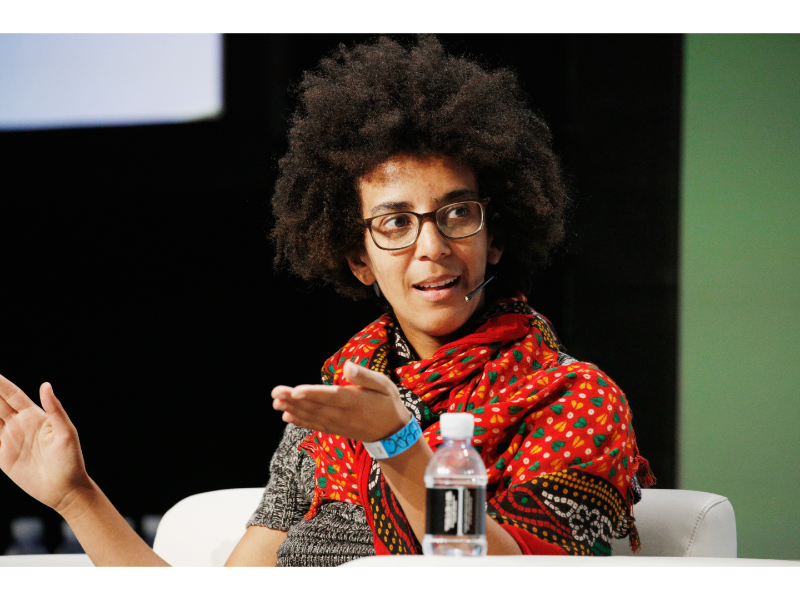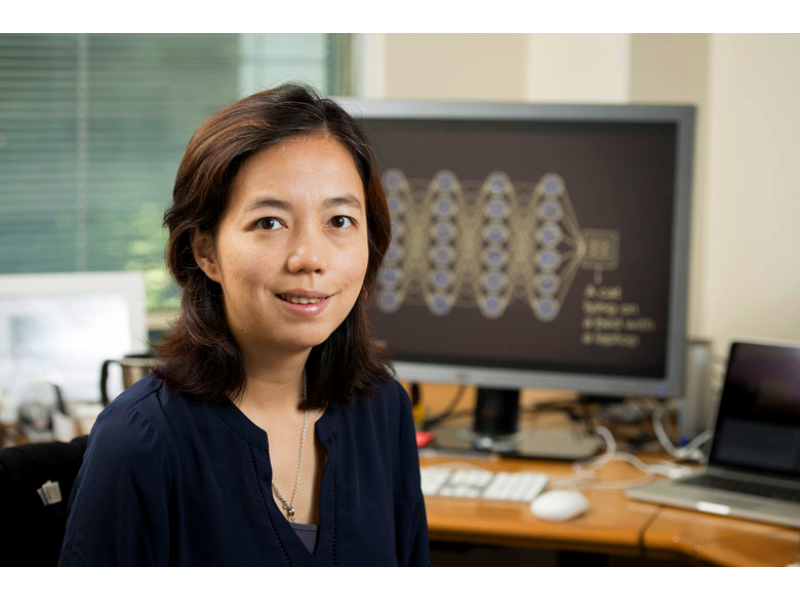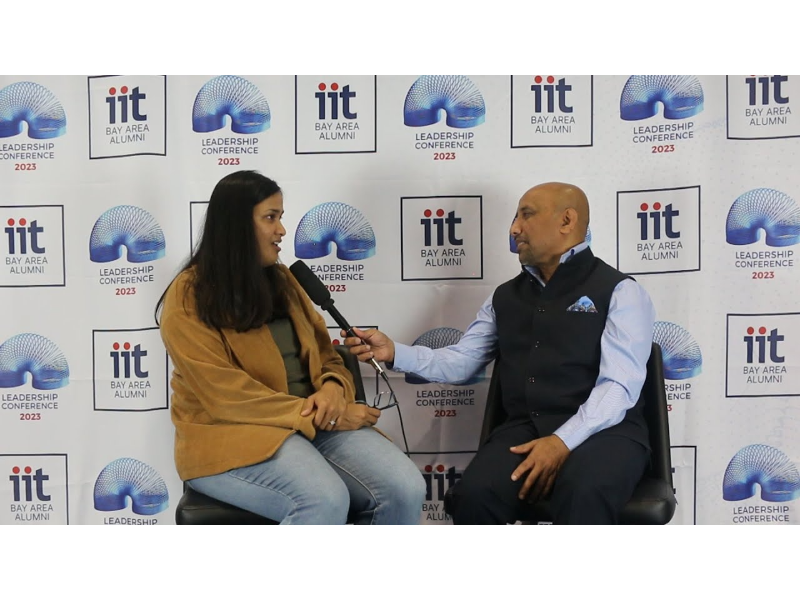- AI is still a male-dominated field, with women comprising only 26% of global data and AI professionals. A report from Stanford University revealed that in 2021, women accounted for only 16% of tenured AI faculty worldwide.
- With the increasing power of AI, there is a lot of unseen strength from women who were once deemed unsuitable for studying science by the public.
- Daniela Amodei, co-founder of Anthropic, and Mira Murati, OpenAI CTO, along with numerous other successful women, are making significant contributions to the AI industry.
While doing the same work, women’s scientific achievements are often overlooked and credited to male colleagues they worked with – a phenomenon known as the Matilda Effect. For example, how many people immediately realise that the earliest computer program in history was written by Ada Lovelace, a woman, or that the first AI textbook was authored by Elaine Rich, also a woman?
Despite long-standing attention to the AI field, how many can readily name prominent female figures in AI? It’s okay if you can’t recall many outstanding women in AI before researching this topic, but that doesn’t mean there aren’t remarkable female tech workers contributing to the AI industry.
Through this article, delving into five successful women’s stories, you will learn about how women are changing the AI industry.
1. Daniela Amodei, co-founder of Anthropic

The other day, Anthropic’s model claimed to surpass the capabilities of OpenAI’s GPT-4, causing quite a stir. Reports on Anthropic often mention its formation by seven researchers who left OpenAI or its CEO’s OpenAI background, inadvertently downplaying Daniela Amodei – the president of Anthropic and one of its two co-founders.
In fact, Anthropic, the world’s second-largest modelling company, was founded by Daniela Amodei and Dario Amodei, who are siblings. The recent release of Anthropic’s new large model was predominantly led by Daniela through many television interviews. When discussing Anthropic, it’s often mentioned that it prioritises alignment with human values more than OpenAI, which Daniela Amodei, the former VP of Safety and Policy at OpenAI, embodies.
Daniela, of Italian descent, grew up in San Francisco. Her work experience is quite diverse. During college, she simultaneously earned bachelor’s degrees in English Literature, Politics, and Music Literature. Her earlier work was predominantly in the political and non-governmental organisation sectors, showcasing strong managerial skills.
In 2013, she chose to join Stripe, founded in 2010, when it was still a small company, but currently valued at $50 billion, with its peak valuation surpassing SpaceX. Starting at Stripe, she began applying her management and risk management skills to tech companies. At Stripe, she was responsible not only for team recruitment but also for one of the most critical aspects of payment enterprises – risk management. She collaborated cross-functionally with machine learning, data science, engineering, legal, finance, and supplier management departments, leading three teams of 26 people, analysing over 7,000 potential fraud, credit, and policy violation cases, achieving a 72% decrease in loss rates from peak, to the lowest in the company’s history.
In 2018, she once again demonstrated her strong strategic vision by joining OpenAI, directly leading two technical teams: OpenAI’s natural language processing and music generation teams, as well as managing the technical security team. In addition to these roles, she served as the VP of People, overseeing recruitment, personnel planning, DEI, learning and development, and incubating new business operations teams, showcasing her versatility.
In 2021, she co-founded Anthropic with Dario Amodei.
Also read: Anthropic claims its latest AI model outperforms GPT-4
2. Mira Murati, OpenAI CTO

Although OpenAI is globally renowned, many may not know that its current CTO is a woman, Mira Murati. She joined OpenAI in 2018 and was promoted to Senior VP overseeing research, product, and partnerships in 2020, then to Chief Technology Officer in 2022, contributing to projects like ChatGPT, DALL-E, and GPT-4. During internal strife at OpenAI, she was briefly nominated for the next CEO.
Born in Albania in 1988, Murati attended high school in Canada, majoring in engineering at Dartmouth College, where she built a hybrid race car for a school project. After a brief stint in aerospace, she joined Tesla as a Senior Product Manager for Model X, deepening her interest in AI through Autopilot. Her passion for research is evident; she once mentioned in an interview, “Boredom is a powerful drive to pursue and explore the forefront of anything.”
Leading OpenAI’s flagship project, ChatGPT, Murati has been deeply involved in many key company endeavours. In 2023, Microsoft CEO Satya Nadella invested $13 billion in OpenAI through a partnership managed by Murati, praising her ability to build teams with technical expertise, business acumen, and a deep understanding of AI’s mission. Recent updates on March 8 revealed her and Ilya Sutskever expressing concerns about Sam Altman’s removal from OpenAI, significantly influencing final decisions. Unlike Sutskever, she seems to avoid marginalisation trends within OpenAI.
While public information may not represent all facts, Murati’s example challenges stereotypes about women in technology and politics.
Also read: OpenAI: Musk’s investment and influence have been small
3. Timnit Gebru, a women single-handedly shakes Google’s AI ethics team

Recently, Google withdrew its model from LifeGraph due to AI ethics concerns, reminiscent of the 2020 drama involving Google’s AI ethics team.
In 2020, Google AI ethics researcher Timnit Gebru publicly disclosed her dismissal for critiquing bias in large language models. Born in Eritrea and Ethiopia in 1983, Gebru earned her Ph.D. in Electrical Engineering from Stanford University in 2014, focusing on computer vision and machine learning.
Throughout her career, she’s championed fairness, accountability, transparency, and ethics in AI, notably prompting policy changes at Amazon through groundbreaking research on facial recognition biases.
In 2020, Gebru co-authored a paper criticising large language models and their environmental impact, raising concerns about the lack of diversity and ethical considerations in AI development. Despite widespread support from researchers, civil rights leaders, and her Google AI colleagues, Gebru ultimately left Google after a dispute over the publication of her paper, during which she found her company email disconnected while on vacation.
The incident sparked outrage, with petitions garnering support from over 1500 Google employees, 2000+ scholars, nonprofit leaders, and industry peers. Following her departure, Gebru founded the independent AI research institute “Distributed AI Research” (DAIR), aiming to counter the pervasive influence of major tech companies in AI research, development, and deployment.
As a true advocate, she stated, “I can’t wait for big tech companies to eventually address the issues AI brings.
Pop quiz
When Anthropic was founded?
A. 2020
B. 2021
C. 2023
D. None of the above
The correct answer is at the bottom of the article.
4. Li Feifei, creator of ImageNet, sparking the AI image revolution

The explosion of AI in academia has a coherent history, but in industry, it can be traced back to one moment: in 2012, the deep learning network AlexNet achieved remarkable success in image recognition.
From then on, artificial intelligence gradually entered the era dominated by deep learning, and within a decade, AI became a hot topic in our lives.
However, the inception of AlexNet ultimately traces back to ImageNet, established by Li Feifei in 2009.
Li Feifei, born in Beijing in 1976 and raised in Chengdu, moved to the United States at the age of 12. Despite initially struggling with English, she quickly became proficient within two years while demonstrating strong mathematical abilities. In 1995, she earned a scholarship to attend Princeton University, where she helped manage her family’s dry-cleaning business on weekends.
In 2007, Li Feifei became an assistant professor at Princeton University. At that time, researchers in computer vision typically had to write algorithms specifically to identify dogs and then write another set to identify cats.
Li Feifei’s intuition was that the model’s capability might be sufficient, but the problem lay in the data.
She wanted to create a massive database with labels for every possible object in each image. At that time, such a project garnered little interest.
Initially, Li Feifei enlisted Princeton students to build ImageNet, but progress was slow. Later, she utilised crowdsourcing platforms to engage part-time workers worldwide in data labelling.
‘Online workers, their goal is to make money in the simplest way, right?’ she said in an interview with Wired. ‘How do you prevent them from randomly clicking through 100 pictures of pandas?’ To address this, she embedded and tracked certain images, such as photos of Golden Retrievers already correctly identified as dogs, as a control group. If the crowd workers could correctly label these images, it could be assumed they were working honestly.
The ImageNet project she initiated initially collected 3.2 million images, later expanding to 15 million. It provided researchers with an opportunity to compare the effectiveness of various algorithms. AlexNet’s fame in 2012 was largely due to its success in the ImageNet Challenge.
It can be said that ImageNet paved the way for the advancement of deep learning, leading to breakthroughs in fields such as autonomous driving, facial recognition, and object recognition.
Even today, when people mention breakthroughs in AI, they often ask, ‘Is this its ImageNet moment?’
In recent years, in addition to advancing research, Li Feifei has focused on increasing diversity and inclusivity in AI, advocating for resources in academia to prevent it from lagging behind industry.
In 2023, her book ‘The Worlds I See: Curiosity, Exploration, and Discovery at the Dawn of AI‘ was published, recounting her scientific journey and interpreting significant historical moments in AI in this century.
5. Niki Parmar, one of the eight authors of the Transformer architecture

The surge of large models came into the public eye perhaps after the emergence of ChatGPT, but there is no doubt that the origin of this trend stems from the 2017 paper “Attention is All You Need,” authored by eight engineers from Google.
This paper introduced the groundbreaking Transformer architecture, upon which leading AI companies we see today, including OpenAI’s ChatGPT, are almost universally built.
I don’t know about the readers, but I was indeed once misled by the media’s portrayal of the ‘Transformer octet,’ thinking that all the authors were male.
That’s not the case; Niki Parmar, the third author of the Transformer, is a female researcher.
Niki Parmar hails from India, where she pursued her undergraduate studies at the Indian Institute of Technology, Bombay, before coming to the United States to pursue a master’s degree in computer science at the University of Southern California in 2013.
Niki became interested in machine learning during her undergraduate years: ‘I attended MOOCs (Massive Open Online Courses) on ML and AI offered by Andrew Ng and Peter Norvig, and I was curious about the combined power of data, pattern matching, and optimisation,’ she mentioned in an interview.
After graduating in 2015, she joined Google’s research organisation, becoming interested in pure research. In 2017, she became one of the core authors of the Transformer.
Regarding research, she said, ‘At first, the abundance of information and research around me constantly bewildered me. Focusing on a specific problem and exploring it with peers can help you ask the right questions.’
Niki Parmar, along with Ashish Vaswani, also of Indian descent and the first author of the Transformer paper, co-founded two companies, Adept AI and Essential AI. She currently primarily manages the latter.
Essential AI secured a new round of funding worth $56.5 million from tech giants AMD, Google, and Nvidia at the end of last year. Adept AI had previously raised $350 million in funding.
The correct answer is B.









